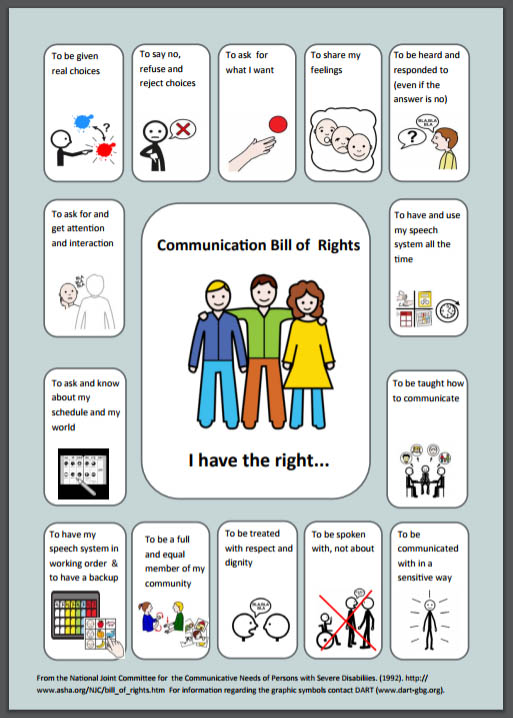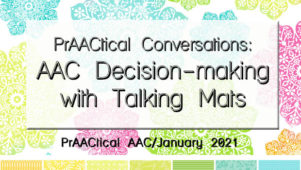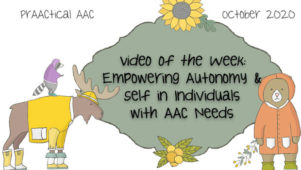5 Ways to Support Self-Advocacy in AAC Learners

self-ad·vo·ca·cy: self ˈadvəkəsē/
Noun: the action of representing oneself or one’s views or interests.
—————————-
Empowering AAC learners to advocate for themselves may be one of the most important and impactful things that we can do to help them stay safe and achieve their goals. Here are some ways we can support that process.
- Provide messages for self-advocacy behaviors: It’s hard to represent your own interests without the appropriate set of vocabulary and messages. Words and prestored messages for protesting and rejecting are essential (e.g., No; Stop; No, thank you; I don’t want to). In addition, consider adding messages which allow the communicator to express disagreement or negative opinions (e.g., I don’t like it; I don’t think so; That doesn’t work for me; This is unfair; That’s disrespectful) and proactively provide self-advocacy information (e.g., Please do what I asked; It’s on my IEP; I have a right to be heard; I feel like you are ignoring me and that’s not right; I already told you ‘no’. Why aren’t you listening?; What part of that did you not understand?!).
- Model it: Utilize an AAC system and incorporate these messages in conversation to provide a model for how these words and messages are used in context. We can look for opportunities to disagree, decline, and stand up for ourselves. We can also use this vocabulary to narrate the what is happening in the natural environment (e.g., “Jimmy looks unhappy. He really wanted to be first. ‘I don’t like it’” “I want my headphones. Please do what I asked.”) We can also display the Communication Bill of Rights and utilize that as a visual support, when appropriate (see this post for a downloadable copy).

- Acknowledge and honor the augmented communicator’s preferences even when they collide with your own whenever possible: Providing access to the right vocabulary and modeling how it is used in real life won’t amount to much unless AAC learners trust that their preferences will be acknowledged and honored. We can’t always comply with the client’s preferences (e.g., to leave school in the middle of the day, to eat specific things that are unavailable, to avoid an essential life activity like showering), but we can always acknowledge them.
- Write a goal for it: There’s no better way to help someone become a strong self-advocate than to directly target it. Writing self-advocacy goals can be an ongoing process, focusing on early developing skills at the start (e.g., communicative functions of rejecting and protesting) and moving onto some of the other areas as skills develop. This leads to systematic instruction so that each skill is broken into its component parts and explicitly taught. As with other important skills, we’ll need to be sure that generalization to a variety of partners, settings, and topics is part of this process.
- Connect them with other self-advocates: For some AAC clients, connecting them with other people who are effective self-advocates can be life-changing. Depending on the circumstances, we may do this in person or via the internet. When local self-advocates are not available, we can use the web to introduce our clients to individuals (e.g., Kevin Williams) or national or local groups (e.g., the Autistic Self Advocacy Network, Self-Advocates of Indiana) who express their point of view and advocate for their positions. Participating in experiences such as the Augmentative Communication Empowerment and Supports program at Temple University can be invaluable in helping some AAC learners further develop their self-advocacy skills.
Have you found helpful and effective ways to build self-advocacy in the AAC learners in your life? We’d love to hear about it.
Filed under: Featured Posts, PrAACtical Thinking
Tagged With: advocacy, self-advocacy, vocabulary selection
This post was written by Carole Zangari




